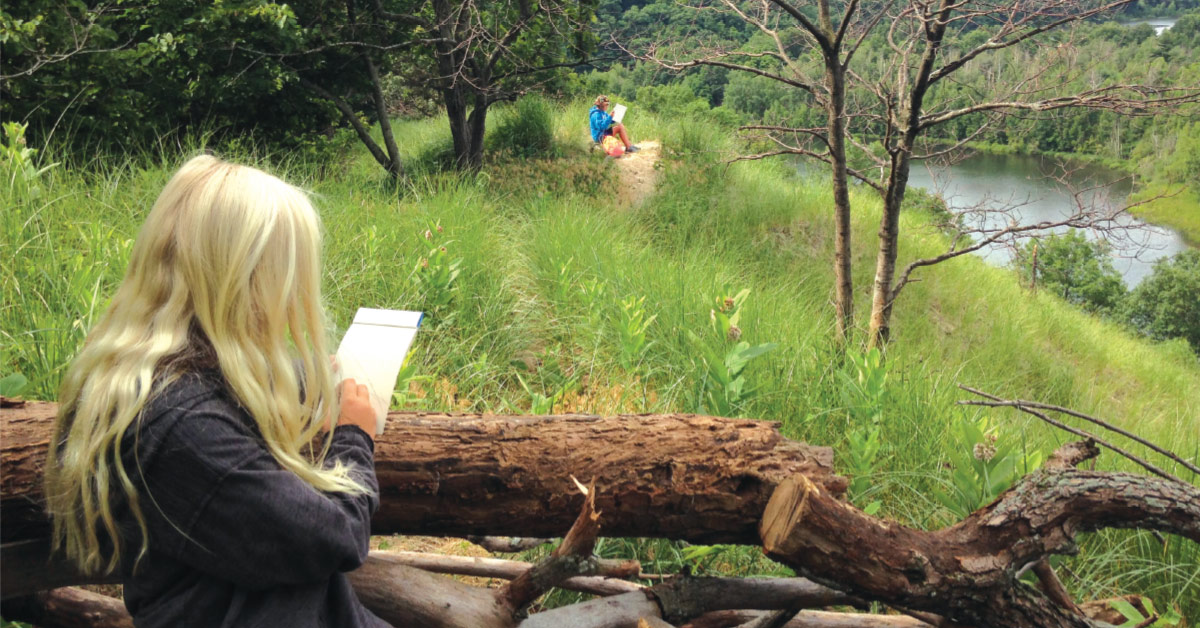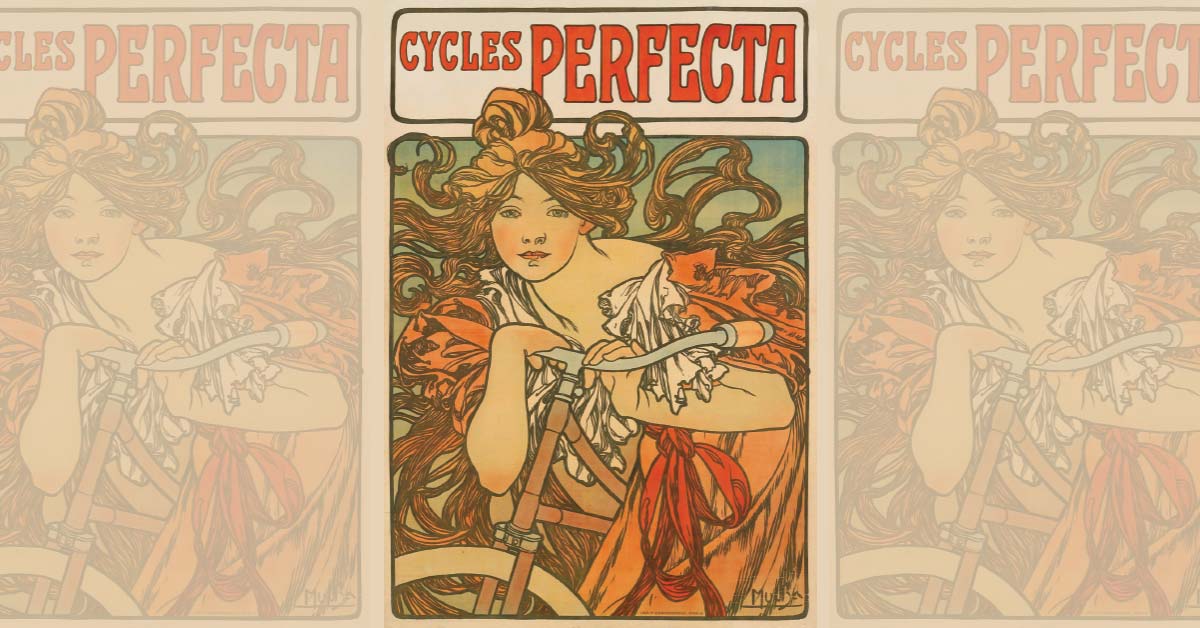It starts with a tour. James Brandess, smiling under a baseball cap, serves as guide for you and the dozen or so people who’ve enrolled in his landscape class. The Oxbow Lagoon: gorgeous.
It’s the old channel from Lake Michigan to the Kalamazoo River, he says, pointing to the pilings where ships used to dock. Then he tells you to find something interesting—something you’d want to paint.
Before the painting can begin, though, there’s a lesson. He shows you the work of another artist, one who, on a similar day, managed to capture subtleties of light and shadow. See how the shadows are muted, not purely black. Look at the way the light filters through the clouds, through the trees.
Next: charcoal. Charcoal isn’t like ink—it’s forgiving. You can move it around on the canvas, the way you can with paint. You can smear it. There’s a romance to charcoal, an atmosphere, just as there is with paint. You do your best to see what’s in front of you, to freeze some of the beauty around you. James walks around, offering feedback, asking questions. You decide you’ll alter your approach when actually painting the scene. Not by a huge amount. Just a little. The charcoal helped.
And now it’s time to paint. You look into the distance, trying to forget what you think you’re supposed to see, and let yourself see what’s actually there. Then, when you’re ready, you begin.
What’s known today in Saugatuck as the Ox-Bow School of Art & Artists’ Residency was founded by Frederick Fursman and Walter Marshall Clute, two artists from Chicago who, battered by that city’s frantic energies, were eager to find solace. Taking advantage of the area’s natural beauty, they taught classes en plein air - outside, in other words. Over a century later, classes are still taught in the summer, and many still take place en plein air.
Ox-Bow faculty, visiting artists, residents, staff, and students live together in community on their campus, where they share meals, social time and ideation. They actively encourage participants to engage across differences in age, regional location, race, and gender identity, learning what it means to be a community by participating in one.
David Baker does not have a century-plus worth of tenure at Ox-Bow, but he has taught there more or less every year since 2000. There are two levels of programming, and he teaches both: core classes, which are taken by college students with serious training under their belts, and Art On The Meadow, which is open to anyone: retirees, working adults, even teenagers looking to get in on the fun.
“There is absolutely no level of skill or experience required for the Art on the Meadow workshops,” he said. “We’re open to everyone. If someone hasn’t figured out which end of the paintbrush to hold, that’s OK. We can help.”
Typically, he’ll teach two workshops a year. Watercolor’s popular, but he teaches pretty much any technique: gauche, charcoal drawing, etc. When classes are focused on painting a building, as they sometimes are, he’ll spend some time talking about the basics of linear perspective. He knows he can’t teach everything and doesn’t try; instead, he focuses on the basics.
“These are often older students who never had two years of art school,” he said. “Sometimes you want to jump right to the color and the candy.”
As he observes the students, what he’s looking for isn’t technical perfection but engagement and absorption. “Some people really bring that personal touch. There’s that lovely quote by Meister Eckhart, ‘the artist is not a special kind of person, but every person is a special kind of artist.’ If someone’s invested, engaged, that’s a success.
“Time and again, people will step back at the end of the session and say, ‘I can’t believe I just did this.’ They really astound themselves. They never would have envisioned that they could do that. I remember a woman who took home a painting of a banana and her husband immediately went out and bought a frame. People are touched by what they find they’re able to do.”
Also at Ox-Bow, Kim Baas is by trade a teacher; she’s taught everything from pre-K to college-level courses. “Ox-Bow is my favorite thing to do,” she said. “You’re not in a windowless box. You’re in this beautiful nature.”
She teaches family classes, broadly defined. To Baas, “family can be anything you want. It’s people who are important to you, who you want to spend time with.”
Because she works with people of all ages, she has to incorporate different techniques. “Adults can sit still,” she said. “Boys are in trees.” She means that literally, as she recalls looking up to see young boys in the trees, sketching away.
Some people come in with years of experience, others with none. “That doesn’t matter. What matters is getting them to see. Look: Trees don’t look like lollipops! Really take a look at them.”
It’s a family affair in more ways than one. Baas’s children, now adults, sometimes help out, whether it’s unloading supplies from the Jeep or, in the case of one son, playing guitar. As her family helps out, so do the clusters of families taking the class: they provide feedback to each other, giving encouragement, teasing, expressing wonder.
“I like to really get to know the participants,” she said. “And to help. Not that there’s a right or a wrong way to do this. There isn’t.” As with Brandess and Baker, she sees her role as not about imposing a vision but helping students achieve their own. And to do that within a quietly beautiful corner of the state.
In this age of AI, she said, we need nature. People crave it. And nature, at time, seems to crave art-making itself, whether by subtly changing the angles of papier-mâché art or dropping an unasked-for but appreciated leaf on exactly the right spot of a canvas. Which it did, to you. And you find that you can’t even be annoyed.
Session’s over. You leave your painting to dry while sitting down for a surprisingly good lunch. You sit there with family, or friends, or people you hadn’t met until that morning. And it’s like you see them anew. Boy, was this something, you think. You’re really going to have to tell people about this place.
Ox-Bow School of Art
3435 Rupprect Way, Saugatuck
ox-bow.org





